Using resistance bands on leg day is a great way to boost strength and flexibility. They target key muscle groups. This guide gives step-by-step instructions for using resistance bands in leg workouts. It will help you improve your performance and create a balanced workout routine. These methods will maximize your leg training. You’ll enjoy the benefits of resistance bands.



Choose the Right Resistance Bands
Select resistance bands that fit your fitness level. Bands come in a variety of thicknesses and resistance levels, so it’s essential to choose the right one for your capabilities.
By matching your resistance bands to your current fitness level, you can enjoy a more effective and enjoyable workout experience.



Warm Up Properly
Warm up before using resistance bands. It will prevent injury and prepare your body for exercise. Begin with dynamic stretches targeting your legs. Swing one leg forward and backward for 10 to 15 repetitions, warming up the hips and hamstrings. Then, do high knees. Alternate legs, lifting your knees to your chest. Do this for about 30 seconds.
Lunge by stepping forward and lowering your body. Both knees should be at 90-degree angles. Alternate legs for 10 repetitions on each side. These exercises boost blood flow to your muscles. They improve flexibility and joint mobility. This gets your body ready for the workout ahead.
Incorporate Resistance Bands into Squats
Place the resistance band above your knees. It should fit snugly against your thighs but not restrict movement. Stand with your feet shoulder-width apart, aligning them with your toes. Start the squat by bending at your hips and knees simultaneously. As you lower your body, push your knees slightly outward against the resistance of the band. This will activate your glutes and thighs more effectively as you descend.
Maintain a straight back and a neutral spine throughout the movement. Keep your chest lifted and your core engaged to support your posture. At the lowest point of the squat, press through your heels and rise back to the start. Your thighs should form a parallel line with the ground. Keep your knees aligned with your toes throughout. This prevents strain and ensures proper form.
Add Resistance Bands to Lunges
Secure the resistance band under your front foot. It should be flat on the ground for stability. Grasp the other end of the band with both hands and hold it at shoulder height. This setup provides added resistance, enhancing the effectiveness of your lunges.
This method efficiently boosts the intensity of your lunges, leading to greater strength gains over time.
Use Bands for Leg Extensions
Attach the resistance band securely to a sturdy object, such as a heavy piece of furniture or a door anchor. Loop the other end of the band around your ankle, ensuring it is snug but not uncomfortably tight. Sit on a chair or bench with your feet flat on the floor and your knees bent at a 90-degree angle.
Extend your leg straight out in front of you against the band’s resistance, keeping your core engaged. Hold the extended position for a moment. Feel the tension in your quads. Then, slowly return to the starting position. Repeat this motion for the desired number of reps. Focus on controlled movements to engage your muscles.
Cool Down and Stretch
After your workout, cool down with static stretches. They will aid recovery and improve flexibility. Find a spot where you can stretch your legs. It should be comfortable and unobstructed. For a hamstring stretch, sit on the floor with your legs extended in front of you. Reach for your toes, keeping your knees straight. Hold for 20 to 30 seconds. This will help release tension in the back of your legs.
Next, progress to a quad stretch. Stand up and grab your right ankle with your right hand, pulling it toward your glutes. Engage your core for balance and hold this deep stretch for 20 to 30 seconds. Switch to the left leg and repeat. Finally, for a calf stretch, stand facing a wall or sturdy surface. Place your hands on the wall and step back with your right leg, keeping it straight while bending your left knee. Push your heel down into the floor, feeling the stretch in your calf. Hold for 20 to 30 seconds, then switch legs. Do these stretches after your workout. They will help you recover and become more flexible over time.
Maximize Your Leg Day Gains
In conclusion, using resistance bands on leg day is a great way to boost your workouts and results. Target different muscle groups and add a fun twist to your workouts. This will improve your strength and keep your fitness routine exciting. So, grab those bands and experiment with the tips in this post. Your legs will thank you!
Essential Equipment Needed



Maximize Your Workout
Effective Techniques and Exercises for Targeting Your Leg Muscles with Resistance Bands
Choose the Right Resistance Band: Start with a lighter resistance band to get a feel for the movements. As you gain strength, you can gradually increase the resistance.
Warm-Up: Before diving into band workouts, do a quick warm-up to get your muscles ready. Simple exercises like leg swings or light jogging can prepare you for the workout ahead.
Basic Leg Exercises:
Enjoy your workouts with the bands, and remember to listen to your body!
Maximize Your Leg Workouts with Resistance Bands
Choosing the right resistance band for your leg exercises is key. It will help you get the most from your workout and reduce injury risk. Here are some key factors to consider:
1. Type of Band: There are various types of resistance bands—loop bands, tube bands with handles, and therapy bands. Loop bands are great for leg exercises. They fit well around your thighs and can target different muscle groups.
2. Resistance Level: Resistance bands have different resistance levels. They are usually light, medium, or heavy. If you’re new to strength training, start with a lighter band to master your form. As you get stronger, gradually use heavier bands to increase the challenge.
3. Material: Look for bands made from durable materials like latex or rubber, which are common. Ensure the band feels strong and doesn’t show signs of wear or tear before you use it.
4. Length and Width: The length and width of the band can affect your range of motion and comfort during exercises. For leg workouts, wider bands are better. They are more stable and spread tension evenly across your muscles.
5. Purpose: Think about the specific exercises you’ll be doing. For lateral band walks or squats, use a strong band. It should resist well without snapping or losing shape.
6. Comfort and Grip: If you go for tube bands with handles, make sure the handles are comfortable and provide a good grip. This is particularly important for leg workouts where you need to maintain stability.
7. Try Before You Buy: If possible, test different bands in a store. You’ll get a better sense of how each feels during movements you plan to do.
By keeping these factors in mind, you’ll find the right resistance band that fits your needs for effective and safe leg exercises. Happy training!

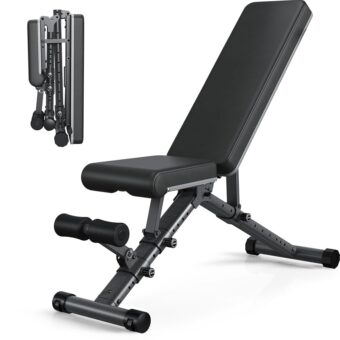


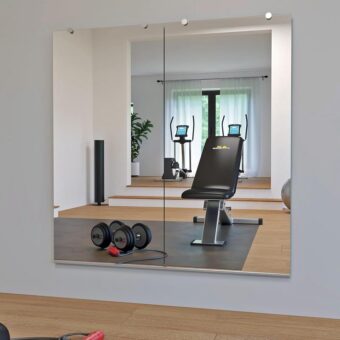
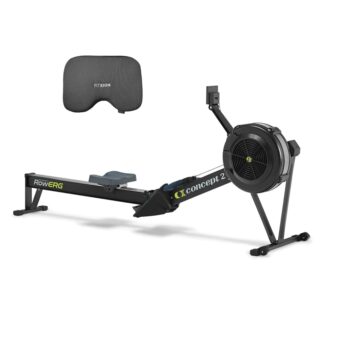
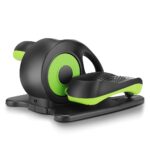

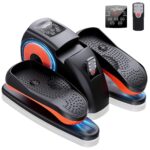
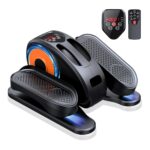
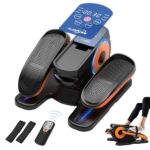
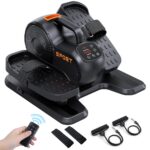
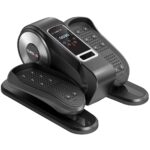

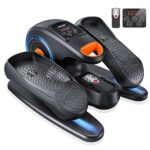
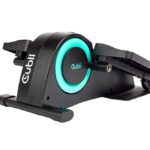
I really struggled with the warm-up part. What do you recommend as the best warm-up exercises to do before hitting legs with bands? I want to avoid any injuries!
Warming up is crucial, especially with resistance bands. Dynamic stretches like leg swings, bodyweight squats, and lunges can help prep your muscles. Just remember to listen to your body and adjust as needed!
I had a hard time figuring out which resistance bands to choose. I ended up getting the Fit Simplify Resistance Bands, but they’re a bit too stretchy for me. Any tips on how to choose the right resistance level? I want to make sure I’m getting the most out of my leg workouts!
Quick question about leg extensions. How do you attach the bands correctly? I tried doing it and it just felt awkward. Any advice would be awesome!
Attaching bands for leg extensions can be tricky. Make sure to secure the band to a sturdy anchor point behind you and adjust the length to suit your range of motion. Practice a few times to get comfortable with it!
Any chance you could do a follow-up article on how to incorporate bands into upper body workouts too? I think it’d be really helpful to see how to use them for things like biceps and triceps!
Great suggestion! Incorporating bands into upper body workouts can really enhance your training. I’ll definitely consider that for a future article. Stay tuned!
Love this guide! I started incorporating resistance bands into my leg workouts, and I’ve noticed such a difference in my strength. For squats, I use the Black Mountain Products Resistance Bands and wow, they really make a difference! Just make sure you’re using the right form!
Thanks for sharing your experience! Black Mountain Products Resistance Bands are a great choice. Focusing on form is key, and it sounds like you’re on the right track. Keep up the good work!
I like to mix things up with my lunges. Sometimes I do reverse lunges with the bands, and it’s been a game-changer for my balance. Anyone else tried this variation? What do you think?
That’s a great variation! Reverse lunges can really target different muscles and improve stability. It’s awesome to hear you’re experimenting with your workouts. Keep it up!
I just want to share my success! I added resistance bands to my leg day routine about a month ago, and I’ve already increased my squat weight by 10 pounds! It’s amazing how much they help build strength. Can’t wait to see even more progress!
That’s fantastic! Congrats on your progress! It’s inspiring to hear how resistance bands have made such a positive impact on your strength training. Keep pushing those limits!